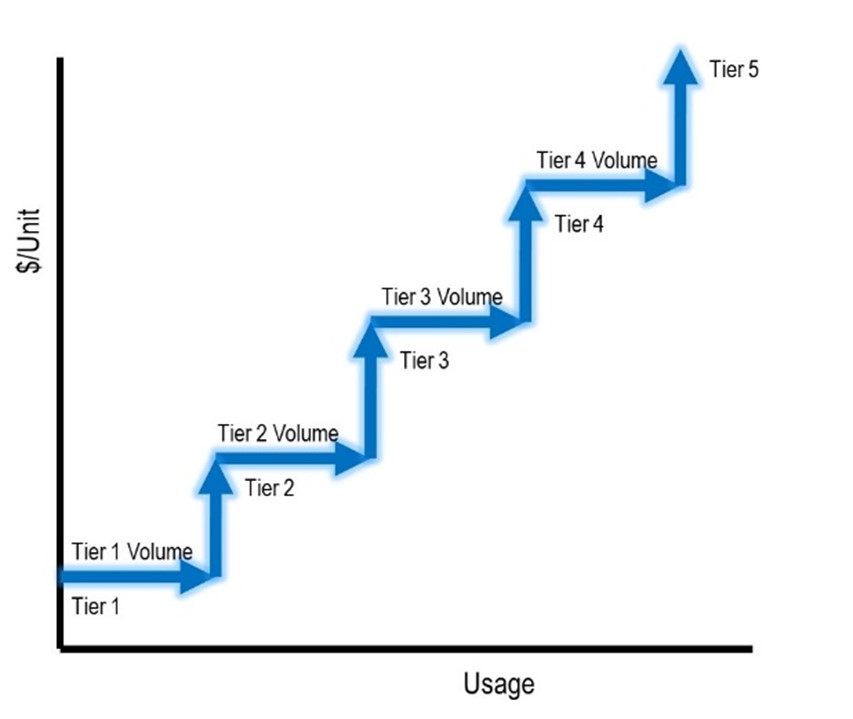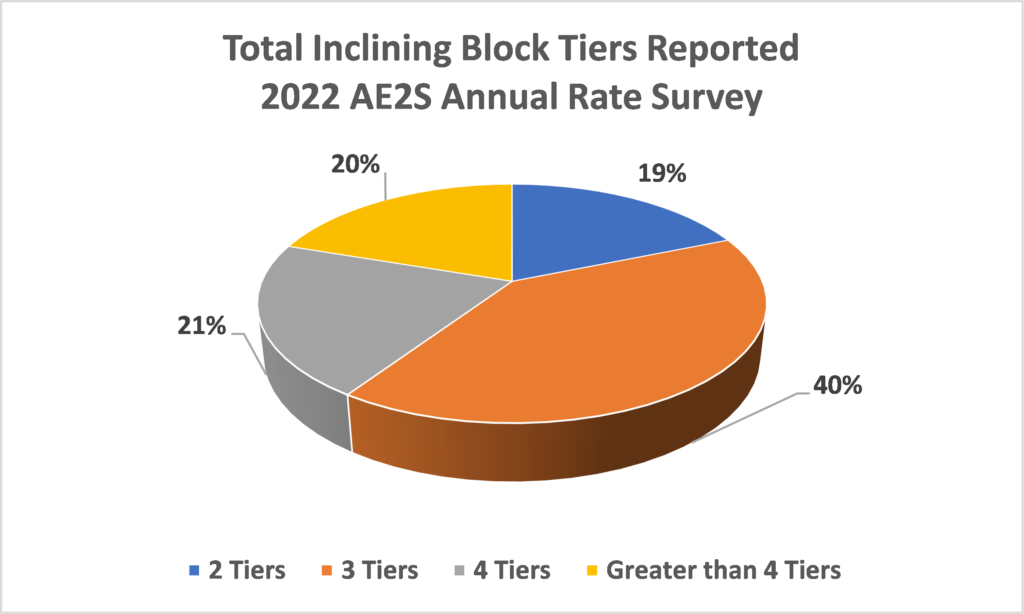Water use is as predictable as it is unpredictable. Factors outside the control of water system managers heavily influence water use – weather conditions, user demographics, economic conditions, etc. Tools available to system managers primarily include educational efforts, incentive programs that reward customers for installation of water-saving devices, and rate structuring/pricing.
Scientific research related to the response of customer water use to pricing has generally found that water use appears to be inelastic. That is, the limited research available did not see a strong correlation between increased price and decreased water use. In general, recent observations of water use by systems in our region indicates pricing structure and price itself does appear to influence a decline in average indoor residential water use. Outdoor water use, however, appears to be most heavily influenced by temperature and precipitation. Anecdotal evidence suggests that a change in rate structure designed to curtail inefficient water use has a greater effect on average indoor water use. This supports an approach to aggressively price the highest tier(s) of water use to send a strong signal to those users with the highest seasonal water use to consider changing habits.
Inclining Block Rate Structures in Our Region
The 2022 AE2S Annual Rate Survey results indicate that overall, 42 percent of 229 municipal respondents currently utilize an inclining block rate structure. An inclining or increasing block structure is one in which a series of blocks or tiers of water are identified, with the unit cost of water increasing for each block. Figure 1 is a graphical depiction of an inclining block rate structure. The bulk of the remaining respondents to the 2022 Survey (50 percent) reported a constant block structure, where each unit of water is priced at the same value, while the remaining eight percent reported either a declining block, flat rate, or seasonal structure.

What is the “Right” Approach?
Communities periodically review their rate structures and often ask: What rate structure is the best fit? What is the right number of tiers? How much water should be included in each tier? What is the most effective pricing interval between the tiers? The answer to these questions, of course, is community-specific and depends upon the community’s water use reduction goals and current customer use patterns. And at the end of the day, the rate structure needs to generate adequate REVENUE to meet system revenue requirements, which typically will not decrease proportionally with decreased water use.
To get some idea of how communities in the region approach these topics and to specifically explore the use of inclining block rate structures in the region, AE2S Nexus collected water rate tier data as part of the 2022 AE2S Annual Rate Survey effort. Figure 2 illustrates the number of tiers reported by respondents utilizing an inclining block rate structure.

While it is interesting to see how many tiers are utilized by systems with inclining block rates, it is equally interesting to evaluate the structure of those tiers. Table 1 summarizes the average volume within each tier for the reported rate structures, along with the average charge per thousand gallons for each tier. Without individual conversations with each system, it is impossible to represent the intent of those tiers. However, it is common to design the tier one volume to be representative of average indoor water use or indoor water use plus a small amount of outdoor water use. The data in Table 1 is consistent with that thought, as the average reported residential winter use for 2022 was 7,700 gallons per month.

Once a system has considered the appropriate amount of water to include in each tier based on water use patterns and overall water use reduction goals, the next consideration is that of pricing the tiers. An effective inclining block structure should have a noticeable increase in price between the blocks. Table 2 summarizes the calculated average relationship between tier structures for respondents to the 2022 AE2S Rate Survey.

When developing both the tier volumes and the associated pricing structure, it is important to equally consider the desired strength of the conservation signal that will be sent, along with the need to generate adequate revenue. The majority of water system costs are fixed and will not significantly be reduced in the near term as water sales decrease.
While inclining block rates can be an effective tool in overall water use reduction initiatives, it is important to consider that high water use does not necessarily indicate wasteful water use. A water-intensive commercial or industrial customer does not necessarily need to have an inclining block rate imposed to signal conservation. Such punitive structures would impact the viability of a business and potentially result in undesired economic losses to the community. The education of these customers along with a constant block structure can be equally or more effective.
Finding the “Right” Approach to Changing Water Use Habits
As part of overall efforts to reduce water demand requirements, communities throughout the region have implemented inclining block rate structures to encourage efficient water use by sending a price signal to customers. If you are considering revisions to your existing inclining block rate structure or implementing an inclining block for the first time, it is important to anticipate response to price. As customers adjust to the new pricing structure, it is likely that changes will need to be made along the way. Education of rate payers prior to and throughout the process of making rate changes is important in supporting a smooth transition when making rate changes. Remember that the goal is to change the habits of your customers, which takes time. Public outreach efforts that address topics such as the value of water, any existing or future water supply challenges, the cost of operating the utility, the nature of utility costs – which are largely fixed, goals/approach to managing water demands, and rate-setting basis can be helpful tools. Planning ahead as much as possible is key, as it provides time to both initiate an education process and ease into any rate changes.
